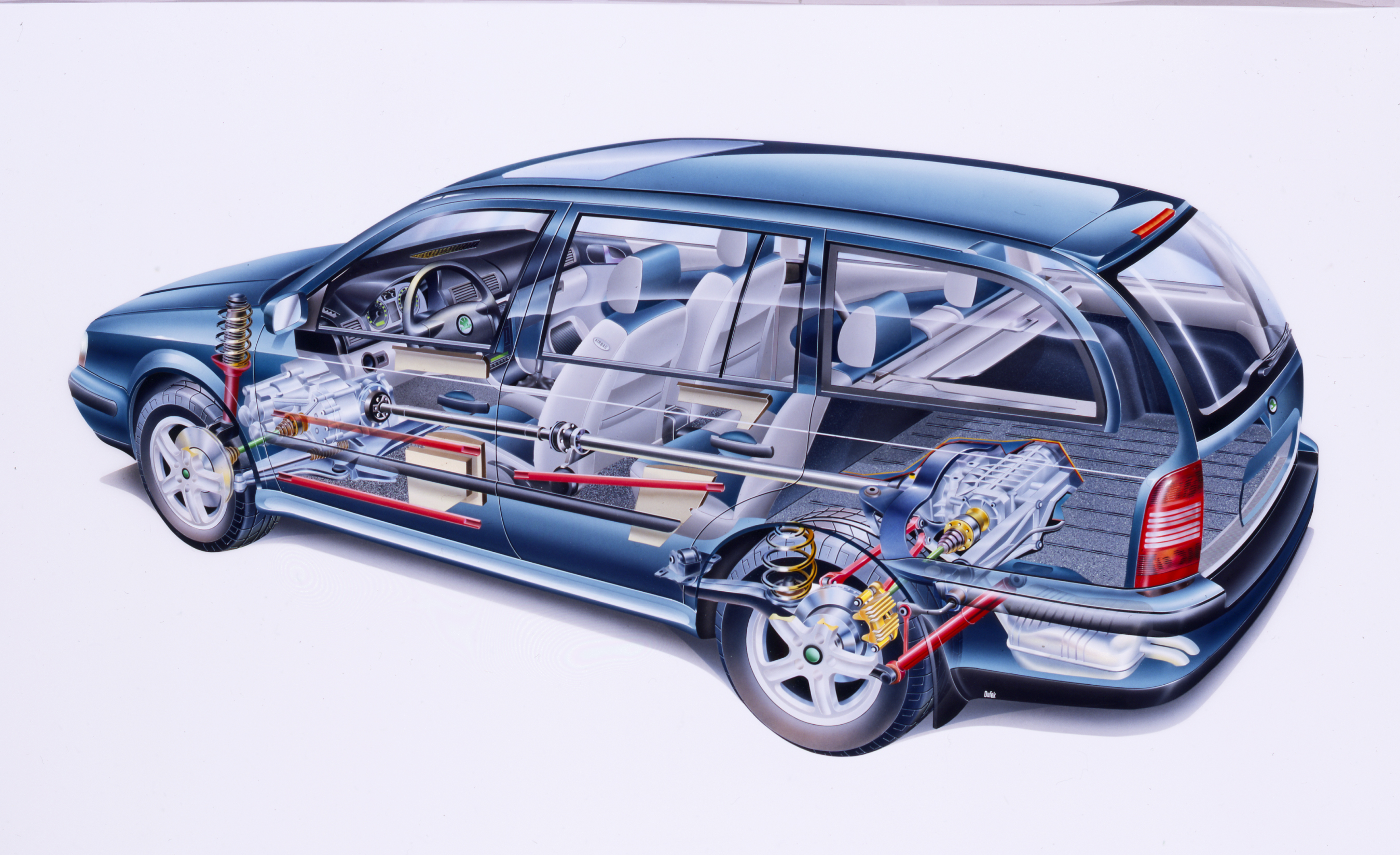ŠKODA’s tradition of estate versions
Cars with practical, spacious and variable “combination” bodies first appeared in the ŠKODA range after the Second World War. They were based on the ŠKODA 1101 “Tudor” model series. In 1949, production of the ŠKODA 1101 Station Wagon, or STW, began at the Kvasiny and Vrchlabí plants. By folding down the undivided backrests of the rear seats, a cargo area of 1,490 mm in length and 980-1,380 mm in width was created.
 Estate version of the ŠKODA 1200
Estate version of the ŠKODA 1200
In the spring of 1953, an even more spacious ŠKODA 1200 STW with an all-metal body was made available. The rear seats were accessed through a single door, from the right, off-road side. Compared to the basic saloon, the weight was increased from 400 kg to 500 kg, and the 1,750 mm long cargo area was narrowed to 990 mm between the wheel arches. Production took place at the Vrchlabí plant, as was the case with the subsequent 1201 STW and 1202 STW.
In 1971, after the popular ŠKODA OCTAVIA COMBI, a completely new generation of rear-engined ŠKODAs began rolling off the production line at Kvasiny. This concept brought a number of advantages, but at the same time limited the variety of body styles available. The estate version disappeared from the Mladá Boleslav brand’s range for twenty years.
 ŠKODA FORMAN
ŠKODA FORMAN
In the spring of 1991, the new front-wheel drive ŠKODA FORMAN was launched, complementing the 350 millimetre shorter FAVORIT hatchback. The body shape was designed by the Italian Stile Bertone studio, and the efficient sharing of maximum components, including an identical boot lid, was unique, even on a global scale. The car’s space-saving concept with the engine mounted transversely above the driven front wheels allowed better use of the enclosed space than in earlier models. The ŠKODA FORMAN’s external dimensions of 4,215 x 1,620 x 1,425 gave users a load area of up to 1,450 mm. With space for 400-1,300 litres of luggage, it was also a very popular type of family car.
The follow-up FELICIA COMBI from 1995-2001 offered a more powerful 1.6 MPI/55 kW engine and a higher level of safety and quality, among other things. The range of comfort and safety features was extended to include ABS, front airbags and air conditioning.
 ŠKODA FELICIA COMBI
ŠKODA FELICIA COMBI
In September 1997, a study of the first modern generation of the ŠKODA OCTAVIA COMBI was presented at the Frankfurt Motor Show, and in September 2000 in Paris the ŠKODA FABIA COMBI appealed to those interested in more compact cars. Nine years later, the new ŠKODA SUPERB COMBI attracted a lot of attention at the Frankfurt IAA, with its impressive luggage volume (633-1,865 litres) and a loading edge just 600 mm above the ground. Luggage handling is also made easier by the – optional – electric boot lid control.






































